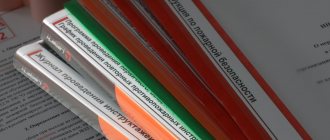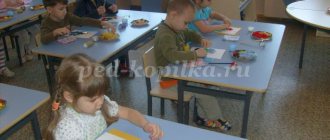The relevance of the problem of social and moral education in preschool educational institutions
Currently, the problem of social and moral education is very relevant and complex.
Changes in society, criticism of certain processes of social life, the emergence of new social phenomena have led to the fact that manifestations of kindness and compassion, love and empathy have become increasingly rare. In society, material values have come to the fore; they prevail over spiritual values. Manifestations of child cruelty and aggressiveness of children towards each other and towards loved ones are becoming more and more common. It has become more difficult for children to build friendly relationships; it is difficult for them to agree on joint actions during play activities. Modern cartoons rarely pursue the task of moral education, therefore, under the influence of these cartoons, children's ideas about moral qualities - about mercy, justice and kindness - are distorted. But despite the changes taking place in society, the education in children of moral qualities, emotional attitude towards loved ones and others must remain unchanged. Therefore, the moral education of children is one of the key tasks.
Are you an expert in this subject area? We invite you to become the author of the Directory Working Conditions
Preschool age is the most sensitive for developing moral rules and norms of behavior, the ability to empathize and compassion. That is why it is necessary at this age to lay the correct foundations of the child’s personality. At preschool age, the formation of the child’s personality begins, his worldview, understanding of evil and good, reaction to the actions of other people are formed, and behavioral characteristics are formed. At this age, the child develops an attitude towards the Motherland, respect for others, goodwill, and a desire to help others.
Fiction as a basic component of social and moral education
One of the basic components in the education and formation of personality is fiction, which acts as a source of moral and aesthetic standards, a translator of the traditions of society and its culture. Performing a cognitive function, fiction broadens the horizons of readers of all ages, shapes artistic taste, and provides emotional experience.
Finished works on a similar topic
Coursework Goals and objectives of fiction in a preschool educational institution 470 ₽ Abstract Goals and objectives of fiction in a preschool educational institution 250 ₽ Examination Goals and objectives of fiction in a preschool educational institution 250 ₽
Receive completed work or specialist advice on your educational project Find out the cost
In the process of becoming acquainted with fiction in preschool age, the child learns about such moral categories as goodness, conscience, justice, honor, sympathy, compassion, duty, courage. Moral education is not achieved by talking to children about morality and virtue. The task of fiction is that when reading it, make children experience the moral moods, actions and feelings of the heroes of the work. And if these moral and emotional states are experienced in the child’s imagination, then the educational goal will be achieved.
Note 1
Fiction is an effective means of developing the moral qualities of an individual.
While reading, the child gets to know the life around him, nature, gets acquainted with the work of people, with his peers, with their joys and failures, experiences and feelings. The literary word has an impact not only on the child’s consciousness, but also on his feelings and actions.
Reading fiction provides an opportunity to compensate for the lack of communication in children, allows them to broaden their horizons and enrich their moral experience. In the process of reading, children develop an emotional relationship to the events described in the work, to the heroes of this work, and also form an attitude towards nature and the people around them.
Works of art always contain some kind of assessment of events. At the same time, in the process of solving the problem of educating moral qualities, it is necessary to use both classical literary works and modern ones.
Works of art open up children to the world of human feelings, arouse interest in personality, in the inner world of a literary character. And having learned to empathize with the characters of works of art, children begin to be more attentive to the people around them, they begin to notice their mood, the mood of loved ones. Then humane feelings begin to awaken, children show the ability to show care and kindness, a desire for justice arises and a protest against unfair treatment of someone.
Thus, reading fiction in a preschool educational institution performs the following tasks:
- Forming in children the idea that books contain a lot of interesting and educational information
- Deepening knowledge about illustrations and their meaning in the book
- Formation of the skill of moral evaluation of a work
- Developing the ability to empathize with heroes
CHILDHOOD GUIDE
Consultation
"Fiction as a means of speech development of preschool children in the context of the implementation of the Federal State Educational Standard for Education"
Gavrilyuk Anna Vladimirovna,
teacher of MBDOU No. 136,
Murmansk
Children's books are written for education,
and education is a great thing.
V.G. Belinsky
It is difficult to imagine preschool childhood without books. Accompanying a person from the very first years of his life, fiction has a great influence on the development and enrichment of a child’s speech: it fosters imagination and provides excellent examples of the Russian literary language.
Listening to a familiar fairy tale or poem, the child experiences and worries along with the characters. This is how he learns to understand literary works and through this is formed as a person.
It is no secret that over the past decades a negative trend has emerged in our country: a significant decline in reading books in general and fiction in particular. In our opinion, there are a number of factors that caused this phenomenon.
Firstly, global informatization of the objective space surrounding every person: through the Internet, both children and adults can freely and without much difficulty obtain any data on any topic, including a “compressed” version of any literary work.
Secondly, the dominance of advertising in the media (television, press) , which shapes the child’s idea of pseudo-values in a person’s life. Children know a lot about consumer electronics, cars, cell phones. They are sure that a real Man is a successful businessman, who certainly gets out of a luxury foreign car and gives instructions to his subordinates using the latest model of telephone.
Thirdly, objective economic and financial difficulties lead to the fact that adults are forced to devote all their thoughts and time to earning material wealth . They don't even remember books! Psychologists have proven that it is parents who are role models for children. If parents don't read, they can't expect their children to.
However, a literary work is fully perceived only if the child is appropriately prepared for it. Therefore, it is necessary to draw children’s attention both to the content of the literary work itself and to its means of expression . Do not forget that interest in reading can be instilled only if the literature corresponds to the interests of the child, his worldview, needs, and spiritual motivations.
In the context of the implementation of the Federal State Educational Standard in preschool education, fiction plays a special role in the development of speech of preschoolers.
Children's perception of literary works in preschool age is quite complex. Each child goes a long way from simple participation in the events depicted to more complex forms of aesthetic perception of a literary work. Psychologists have paid attention to the peculiarities of preschoolers’ understanding of the artistic form and content of literary works - this is the child’s short life experience, concrete thinking, and direct relationship to reality. Aesthetic perception of a literary work occurs as a result of purposeful perception at a certain stage of development.
Already at an older preschool age, children are able to understand the content, idea and expressive means of language, and further acquaintance with literary works will be based directly on the foundation that adults (parents, educators) lay in preschool childhood.
Forming an interest and need for reading (perception) of books, we begin by introducing children to the book corner . The permanent book fund of the corner consists of programmatic and favorite works of children. Once alone, children look at, explore, and study books on their own. When introducing a child to a book, we form a caring attitude towards it (do not tear, do not crumple, do not bend the leaves).
The diversity of the book environment stimulates children’s independent cognitive activity, develops their horizons and the ability to navigate book material.
A child's acquaintance with books begins in early preschool age . These are picture books, screens, toys, books with sound and visual games, theater, gift books with children's folklore, etc. One pattern should appear in all of them: there is more visual material than text.
In the middle group, children continue to be introduced to fiction. The teacher draws the children's attention both to the content of the literary work itself and to some features of the language (some epithets and comparisons, figurative words and expressions). After reading (telling) fairy tales, it is necessary to teach children to answer questions related to the content of the work, as well as the simplest questions about the artistic form. It is very important to formulate questions correctly after reading. This is necessary in order to help children highlight the main thing - the main events of the work, the actions of the main characters, their actions and relationships. Only a correctly posed question can force a child to think, reflect, and come to the right conclusions. When reading poems, they highlight the musicality, rhythm, and melodiousness of the poems, emphasize figurative expressions, and develop in children the ability to notice the richness and beauty of the Russian language.
In the older group , when perceiving the content of literary works, we teach children to notice expressive means.
In the preparatory group, the teacher is faced with the task of instilling in children an appreciation for fiction, books, and the ability to feel an artistic image; develop a poetic ear (the ability to capture the sonority, musicality, rhythm of poetic speech), intonational expressiveness of speech: cultivate the ability to feel and understand the figurative language of fairy tales, stories, poems. It is necessary to carry out such an analysis of literary works in which children learn to distinguish between genres, understand their specific features, and feel the imagery of the language of fairy tales, short stories, poems, fables and works of small folklore genres. Reading literary works reveals to children all the richness of the Russian language and helps them begin to use this richness in independent creativity and everyday verbal communication. At this age, children develop the ability to enjoy the artistic word, and the foundation is laid for the formation of a love for their native language.
Introducing children to fiction gives better results if the efforts of educators and parents are combined. If a child grows and develops in an environment where talking, listening, and reading are the norm of everyday life, he will show curiosity and interest in varied and meaningful information.
Thus, in order to enrich and improve children's speech, it is necessary to create a favorable speech environment and carry out the targeted formation of specific speech skills, enriching the life literary experience of children.
Remember that reading for a preschooler is, first of all, communication. Talk to your child!
Literature:
- FROM BIRTH TO SCHOOL. Approximate general educational program for preschool education (pilot version) / Ed. N. E. Veraksy, T. S. Komarova, M. A. Vasilyeva. - M.: MOSAIC SYNTHESIS, 2014.
- A.I. Maksakov, development of correct speech of a child in the family. - M.: Mosaika-Sintez, 2006.
- V.V. Gerbova Introduction to fiction. - M.: Mozaika-Sintez, 2008.
Interaction between kindergarten and family in the context of the implementation of the Federal State Educational Standard for Preschool Education Formation of the musical culture of preschool children in the context of the implementation of the Federal State Educational Standard for Preschool Education Use of ICT in the educational process in the context of the implementation of the Federal State Educational Standard for Preschool Education Application of TRIZ technology to solve problems of speech development of preschool children >



